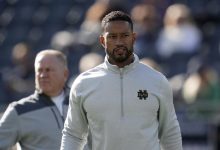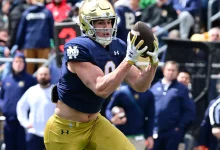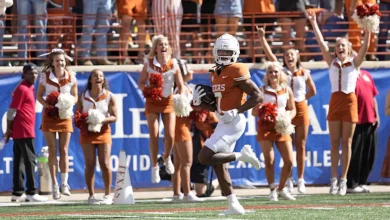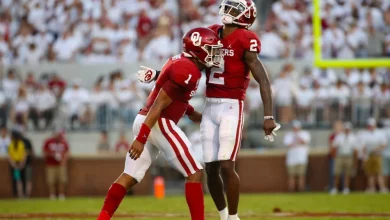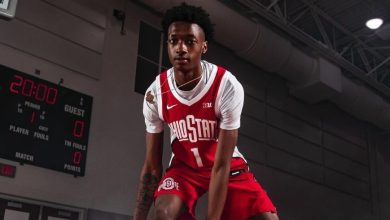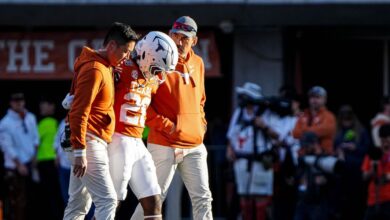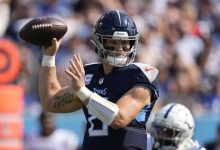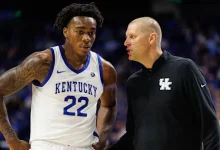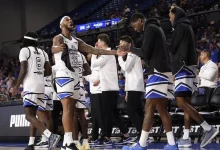Jayden Quaintance’s injury is concerning for Kentucky, as his recovery timeline and readiness impact the team’s frontcourt depth and defensive presence ahead of the season’s critical early games.
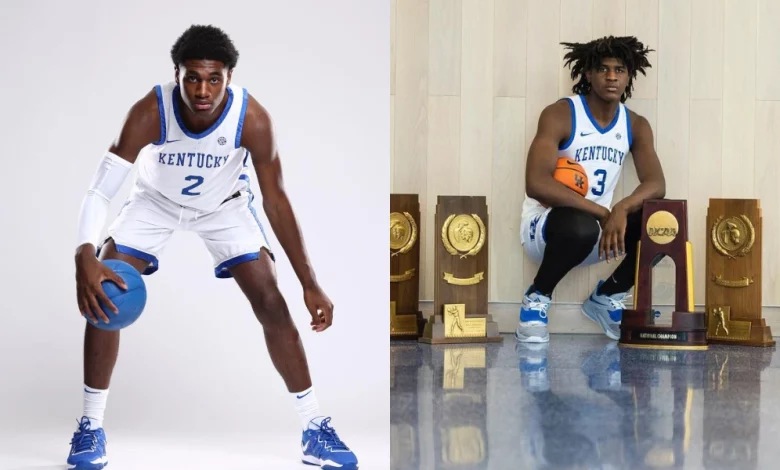
As Kentucky Wildcats basketball prepares for another highly anticipated season, the health of key players is always a focal point for coaches, fans, and analysts alike. One name that has garnered significant attention in recent months is Jayden Quaintance, the talented forward whose injury status poses important questions about Kentucky’s frontcourt depth and overall team dynamics. This article explores the concerns surrounding Quaintance’s injury, the potential impact on Kentucky’s season, and the broader context of player recovery and team strategy.
Jayden Quaintance: A Brief Background
Jayden Quaintance arrived at Kentucky with considerable buzz following a successful freshman season at Arizona State. Standing at 6-foot-9, Quaintance possesses a rare combination of size, athleticism, and skill that makes him a versatile forward capable of impacting the game on both ends of the floor. His ability to score inside, defend multiple positions, and contribute on the boards made him an immediate asset for Kentucky’s roster.
The expectation was that Quaintance would be a cornerstone of Kentucky’s frontcourt moving forward, providing stability and versatility that would allow the Wildcats to compete at the highest level. However, an injury has put these plans into question, prompting concerns about his availability and readiness for the upcoming season.
Nature of the Injury and Recovery Timeline
While specific details of Quaintance’s injury have been guarded, reports suggest he is recovering from a significant setback—commonly speculated to be related to his knee or lower body. Such injuries often require extensive rehabilitation, including physical therapy, strength rebuilding, and careful progression to game readiness.
Recovery timelines for these injuries vary, but for a player of Quaintance’s size and style, returning too quickly can risk re-injury or hinder performance. The Kentucky coaching staff and medical team have emphasized a cautious approach, prioritizing long-term health over immediate returns.
Experts generally note that recovery from a major injury can take anywhere from six months to over a year, depending on severity and complications. While optimistic projections suggest Quaintance could be cleared to play by the start of the season, there remains inherent uncertainty.
Impact on Kentucky’s Frontcourt Depth
Kentucky’s frontcourt has been a focus of concern even before Quaintance’s injury. Losing or limiting his availability significantly strains the team’s depth and versatility.
Defensive Presence
Quaintance’s size and athleticism allow him to guard multiple positions, protect the rim, and contest shots effectively. Without him, Kentucky loses a key defensive anchor who can switch on screens and contribute to team defense schemes.
Rebounding and Physicality
His ability to crash the boards and compete physically inside is crucial for maintaining possession and controlling tempo. His absence could expose Kentucky to rebounding mismatches against strong frontcourts.
Offensive Versatility
On offense, Quaintance’s skill set offers flexibility—stretching the floor with mid-range shooting and attacking the basket with aggression. Kentucky’s offensive schemes will have to adjust without his presence, potentially limiting scoring options.
How the Coaching Staff Is Adjusting
Kentucky’s coaching staff, led by head coach Mark Pope, is no stranger to adversity and roster challenges. The team has shown resilience in the past, often adapting schemes to fit available personnel.
Emphasis on Developing Other Frontcourt Players
With Quaintance’s injury, greater responsibility falls on other forwards and centers. Players who may have seen limited minutes previously will need to step up in practice and games.
Recruiting and Transfers
Kentucky’s roster construction strategy includes recruiting and transfer activity to fill gaps. The coaching staff will likely prioritize frontcourt depth in ongoing recruitment efforts.
Tactical Adjustments
Expect Kentucky to adjust their defensive and offensive schemes to compensate for the frontcourt’s changing dynamics. This might include increased reliance on perimeter defense or faster-paced offense to mitigate inside mismatches.
Player Mindset and Team Chemistry
Injuries can impact not just the physical lineup but also team morale and chemistry. How Kentucky’s players respond to Quaintance’s injury will influence the team’s cohesion.
Leadership Role
Veteran players will be tasked with rallying the team and maintaining focus despite setbacks.
Opportunity for Others
For some players, Quaintance’s absence creates opportunities to earn playing time and prove themselves, which can boost overall team depth and competitiveness.
Long-Term Considerations
While the immediate focus is on the upcoming season, Quaintance’s injury also has implications for his career trajectory and Kentucky’s future planning.
Player Development and Future Potential
A well-managed recovery could see Quaintance return stronger, contributing significantly in subsequent seasons.
Professional Prospects
For a player with NBA aspirations, demonstrating full recovery and effectiveness post-injury is critical.
Recruiting Messaging
Kentucky’s ability to support injured players and manage recovery can positively influence future recruits considering the program.
Historical Context: Injuries and Team Performance
Kentucky basketball has weathered injuries to key players before, with varying outcomes. Historical examples show that a team’s response—both in preparation and mentality—often defines the season more than individual injuries.
Fan and Media Reactions
Among Kentucky’s passionate fan base, concern over Quaintance’s injury is palpable. Media coverage reflects a mix of optimism and caution, highlighting the uncertainty but also the program’s commitment to player health.
Balancing Concern with Optimism
Jayden Quaintance’s injury is undoubtedly concerning for Kentucky basketball, given its impact on frontcourt depth and team dynamics ahead of the season. However, with a cautious recovery plan, strategic coaching adjustments, and resilient team culture, Kentucky has the tools to navigate this challenge.
While the loss or limitation of a key player is never ideal, it also opens the door for growth and opportunity within the squad. Kentucky’s ability to adapt and support Quaintance’s return will be pivotal to the Wildcats’ success in the upcoming season and beyond.

